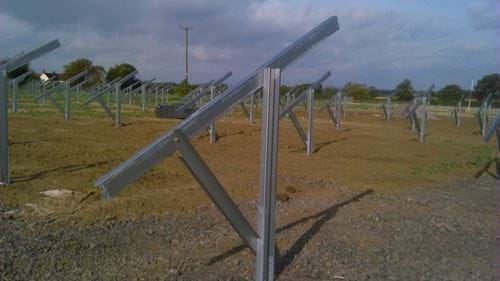Day 222: Energy - night and day

4th January 2015
Author: Geoff Maitland, IChemE President 2014–2015.
The British have a reputation for being obsessed with the weather. It's not uncommon to have what feels like four seasons in a day. And because of this, regardless of subsidies, solar energy hasn't always been the first choice with the equivalent of just one-in-six days of sunshine each year,
But that doesn't mean that solar energy isn't important, especially if there are storage solutions on the horizon.

Around about now, a new solar farm in Hadley, Telford and Wrekin, will be plugged into the UK's National Grid. It will have 15,000 solar panels ready to generate enough energy to power 800 homes.
This might be modest in comparison to the £1.4 billion (US$2.2 billion) Ivanpah Solar Electric Generating System in the Mojave Desert, USA, with its 170,000 panels capable of powering 140,000 homes - but it is still significant for a 'cloudy' country.
One of the game-changers for the future of solar energy is how to store the energy harvested on sunny days for use at night and cloudy days.
There are different solutions being developed, including a recent innovation by chemical engineers at Stanford University.
They have adapted ideas from oil refineries to design a catalyst that could help produce vast quantities of pure hydrogen through electrolysis – the process of passing electricity through water to break hydrogen loose from oxygen in H2O.
Chemical engineering Professor Thomas Jaramillo and research associate Jakob Kibsgaard want to use the electrolysis process to store solar energy.
Platinum is the best catalyst for producing hydrogen through water electrolysis. But to make electrolysis an industrial process a cheaper electrode must be found.
Thomas says: "We're trying to make H2 in the most efficient way possible without using precious metals."
At present there is no cost-effective, large-scale way to store solar energy. The Stanford researchers believe that electrolysis could turn tanks of water into batteries for storing solar energy.
During the day, electricity from solar cells could be used to break apart water into hydrogen and oxygen. Recombining these gases would generate electricity for use at night.
Cracking the chemical bonds of water produces a hydrogen ion – a proton with no electron to balance it out.
A good H2 catalyst gives the proton a place to stick until it can pick up an electron to form a hydrogen atom on the catalyst surface and then pair up with a neighbouring hydrogen atom to bubble off as H2.
The trick is finding a catalyst with the right stickiness.
"If the binding is too weak, the ions don't stick. If it's too strong, they never get released", says Thomas.
Platinum is perfect but expensive. However, the Stanford team discovered that a version of molybdenum sulfide, a catalyst widely used in petrochemical processing, had some of the right properties to serve as a cheap but efficient alternative to platinum.
As part of their experiments Thomas' team added sulphur atoms to a catalyst called molybdenum phosphide, which is known to speed up hydrogen production though electrolysis.
Adding the sulphur atoms created a new catalyst – molybdenum phosphosulfide – that was more effective at producing hydrogen than its predecessor.
The new sulphur-laced catalyst is more durable, which is vital in an industrial process where the electrode must function day in, day out, without degrading.
Let's hope this is another idea which might lead to storing solar energy by day, to use at night, when the sun has long since disappeared over the horizon.
*************************************************************************************************
Are you a chemical engineer with a great story to tell? Please share your story.
ChemEng365 blog
Geoff Maitland launched this blog during his IChemE presidency in 2014. ChemEng365 features 365 chemical engineering successes and achievements throughout his year-long presidency.